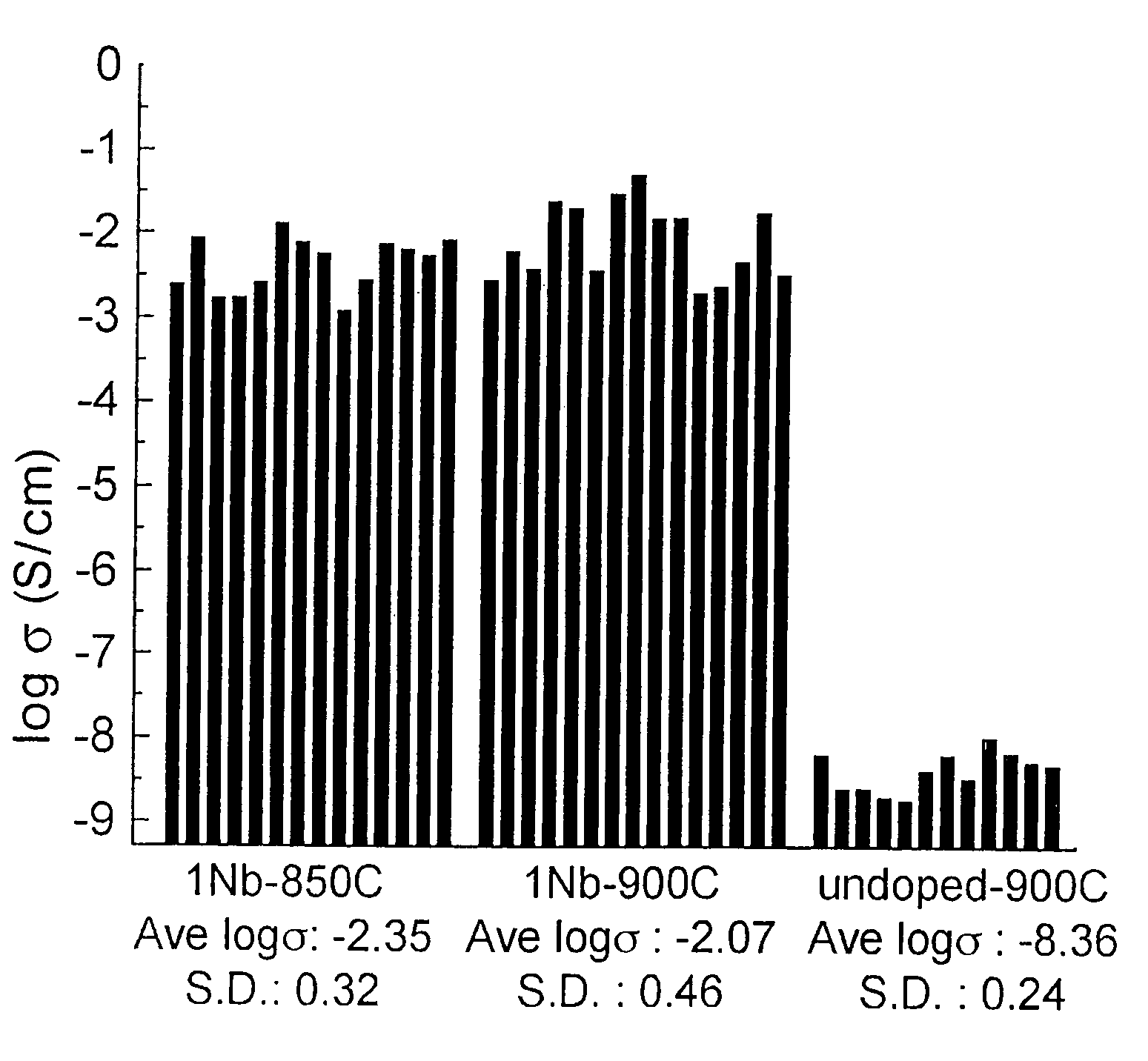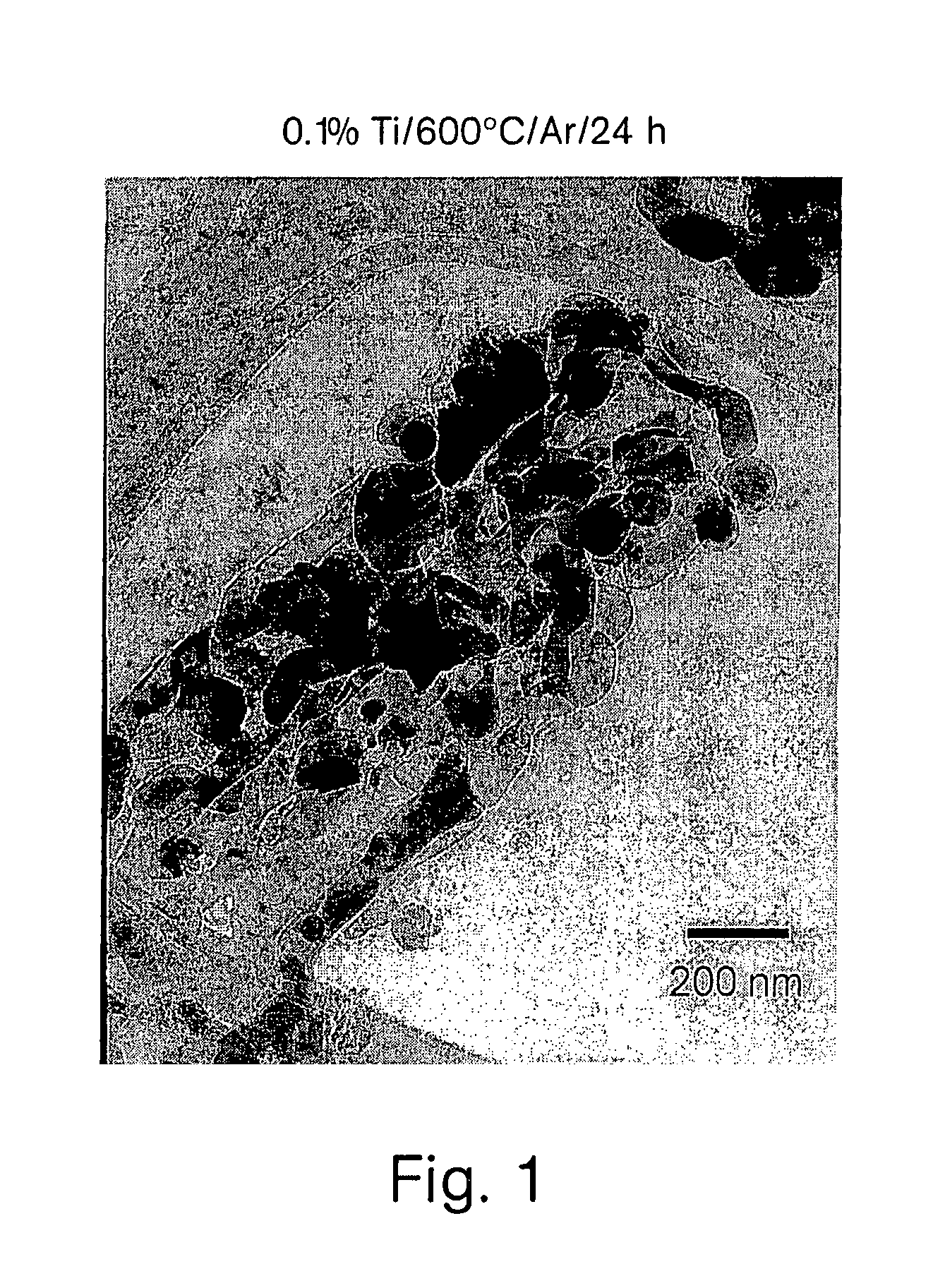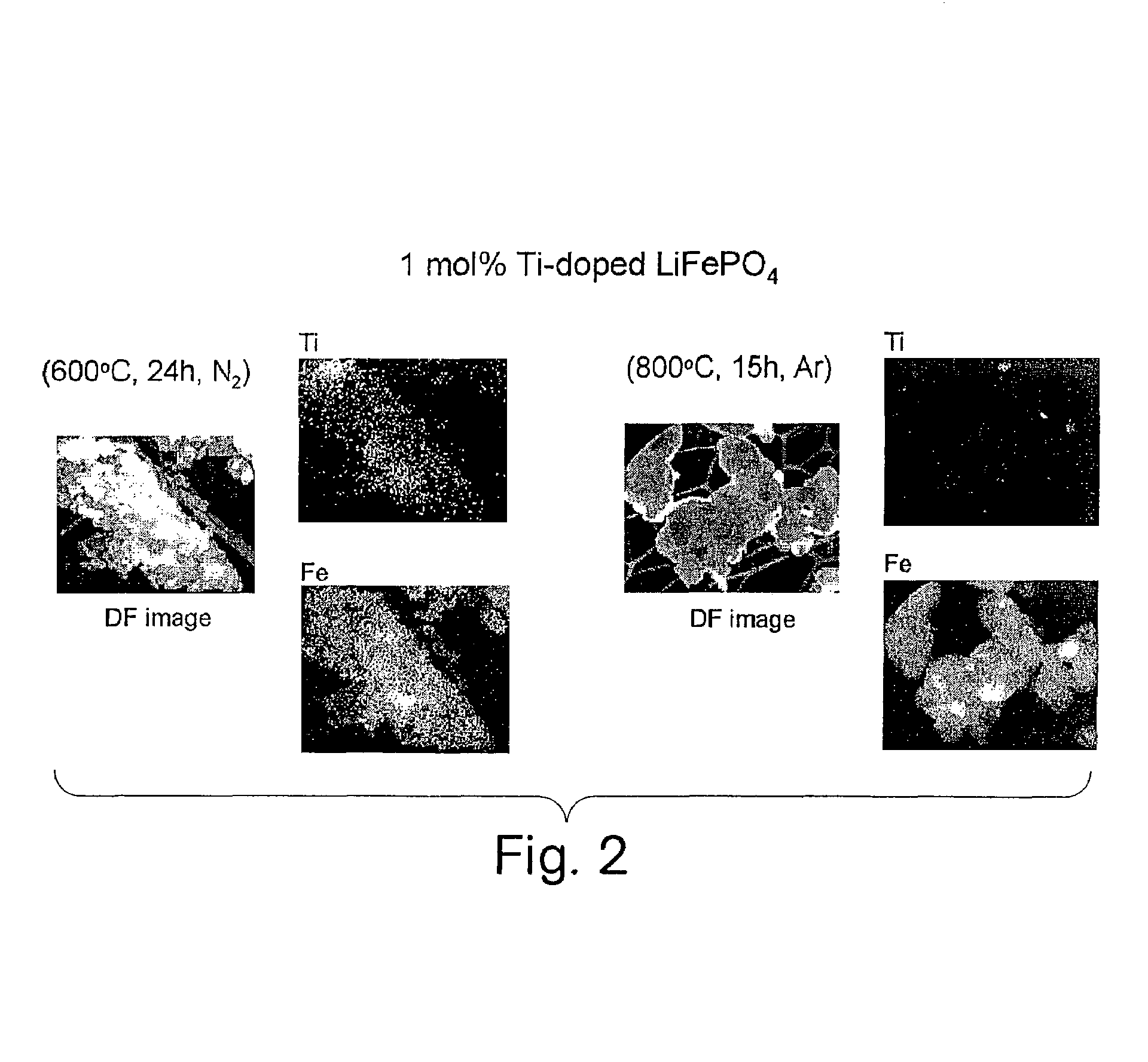Conductive lithium storage electrode
a lithium storage electrode and conductive technology, applied in the field of transition metal polyanion oxides, can solve the problems of poor electronic conductivity, poor electronic conductivity, and low gravimetric and volumetric capacity of storag
- Summary
- Abstract
- Description
- Claims
- Application Information
AI Technical Summary
Problems solved by technology
Method used
Image
Examples
example 1
Metal-Doped Compositions
[0121]This example demonstrates the preparation of compositions having the formulation Li(Fe1-aM″a)PO4, where M″ is Al, Ti, Zr, Mn, Nb, Ta, W, Mg, or Li. Specific compositions, heat treatments, and results are listed in Tables 2 and 3, respectively. It was found that the electronic conductivity increased only for certain low concentrations of the metal additive or dopant. The specific range of concentration providing a high electronic conductivity (greater than about 10−5 S / cm) varied for each dopant but was generally less than about 5 mole % of the Fe concentration. In addition to having a low concentration of the dopant, it was necessary to heat treat the material under conditions such that high electronic conductivity was obtained. These conditions included heat treatment in a non-oxidizing gas atmosphere, including but not limited to argon, nitrogen, and nitrogen-hydrogen mixtures. Moreover, the temperature of heat treatment was less than about 800° C. At...
example 2
Lithium Deficient and Substituted Compositions
[0146]Several compositions were prepared with an overall composition of the formula Li1-aM″aFePO4, included in Table 2. The starting materials and synthesis procedure of Example 1 were used, with the exception that both plastic and porcelain milling containers were used with the zirconia milling media. Because the abrasion of polymeric milling containers and milling media can be a source of carbon, the porcelain containers were used to compare results with and without this potential carbon source.
[0147]As shown in Table 2 and also in Table 4, the doped samples of this doping formulation generally had higher conductivity than those of Example 1, with room-temperature conductivities of as much as about 4×10−2 S / cm being measured by a two-point method (samples 5f6 and 5 g7). Highly conductive samples were obtained using either plastic or porcelain milling containers, showing that excess carbon added from the milling container is not necessa...
example 3
Electrode Fabrication and Electrochemical Tests
[0169]A composition Li0.998Nb0.002FePO4 was prepared as described in examples 1 and 2 using lithium carbonate, niobium phenoxide, iron oxalate, and ammonium dihydrogen phosphate, and heat treated according to the procedure labeled as HT1 shown in Table 2. The resulting powder was black and conductive, and was cast as an electrode coating on an aluminum foil current collector, using a standard formulation of 85 wt % of said composition, 10 wt % SUPER P™ carbon, and 5 wt % PVDF binder. γ-butyroactone was used as the solvent. The positive electrode (cathode) coating was tested against a lithium metal foil counterelectrode (anode) in a standard cell assembly using CELGARD® 2400 separator film and EC:DMC (+1M LiPF6) as the electrolyte. Galvanostatic tests were performed at several current rates. FIG. 17A shows the first electrochemical cycle at C / 30 rate, in which it is seen that a capacity of about 150 mA / g is obtained. A flat voltage plate...
PUM
| Property | Measurement | Unit |
|---|---|---|
| Temperature | aaaaa | aaaaa |
| Temperature | aaaaa | aaaaa |
| Fraction | aaaaa | aaaaa |
Abstract
Description
Claims
Application Information
 Login to View More
Login to View More - R&D
- Intellectual Property
- Life Sciences
- Materials
- Tech Scout
- Unparalleled Data Quality
- Higher Quality Content
- 60% Fewer Hallucinations
Browse by: Latest US Patents, China's latest patents, Technical Efficacy Thesaurus, Application Domain, Technology Topic, Popular Technical Reports.
© 2025 PatSnap. All rights reserved.Legal|Privacy policy|Modern Slavery Act Transparency Statement|Sitemap|About US| Contact US: help@patsnap.com



